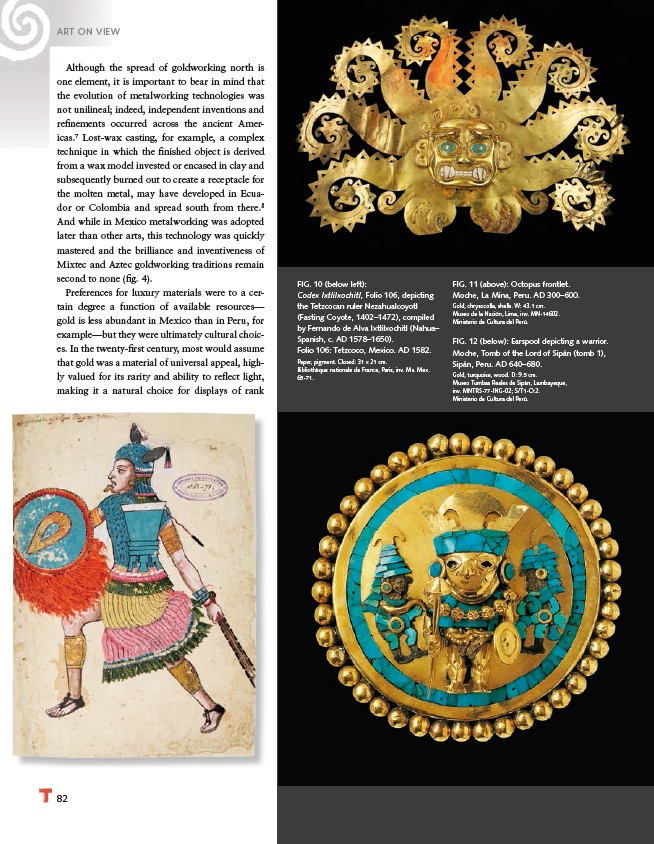
82
FIG. 10 (below left):
Codex Ixtlilxochitl, Folio 106, depicting
the Tetzcocan ruler Nezahualcoyotl
(Fasting Coyote, 1402–1472), compiled
by Fernando de Alva Ixtlilxochitl (Nahua–
Spanish, c. AD 1578–1650).
Folio 106: Tetzcoco, Mexico. AD 1582.
Paper, pigment. Closed: 31 x 21 cm.
Bibliothèque nationale de France, Paris, inv. Ms. Mex.
65-71.
FIG. 11 (above): Octopus frontlet.
Moche, La Mina, Peru. AD 300–600.
Gold, chrysocolla, shells. W: 43.1 cm.
Museo de la Nación, Lima, inv. MN-14602.
Ministerio de Cultura del Perú.
FIG. 12 (below): Earspool depicting a warrior.
Moche, Tomb of the Lord of Sipán (tomb 1),
Sipán, Peru. AD 640–680.
Gold, turquoise, wood. D: 9.5 cm.
Museo Tumbas Reales de Sipán, Lambayeque,
inv. MNTRS-77-ING-02; S/T1-O:2.
Ministerio de Cultura del Perú.
ART ON VIEW
Although the spread of goldworking north is
one element, it is important to bear in mind that
the evolution of metalworking technologies was
not unilineal; indeed, independent inventions and
refi nements occurred across the ancient Americas.
7 Lost-wax casting, for example, a complex
technique in which the fi nished object is derived
from a wax model invested or encased in clay and
subsequently burned out to create a receptacle for
the molten metal, may have developed in Ecuador
or Colombia and spread south from there.8
And while in Mexico metalworking was adopted
later than other arts, this technology was quickly
mastered and the brilliance and inventiveness of
Mixtec and Aztec goldworking traditions remain
second to none (fi g. 4).
Preferences for luxury materials were to a certain
degree a function of available resources—
gold is less abundant in Mexico than in Peru, for
example—but they were ultimately cultural choices.
In the twenty-fi rst century, most would assume
that gold was a material of universal appeal, highly
valued for its rarity and ability to refl ect light,
making it a natural choice for displays of rank